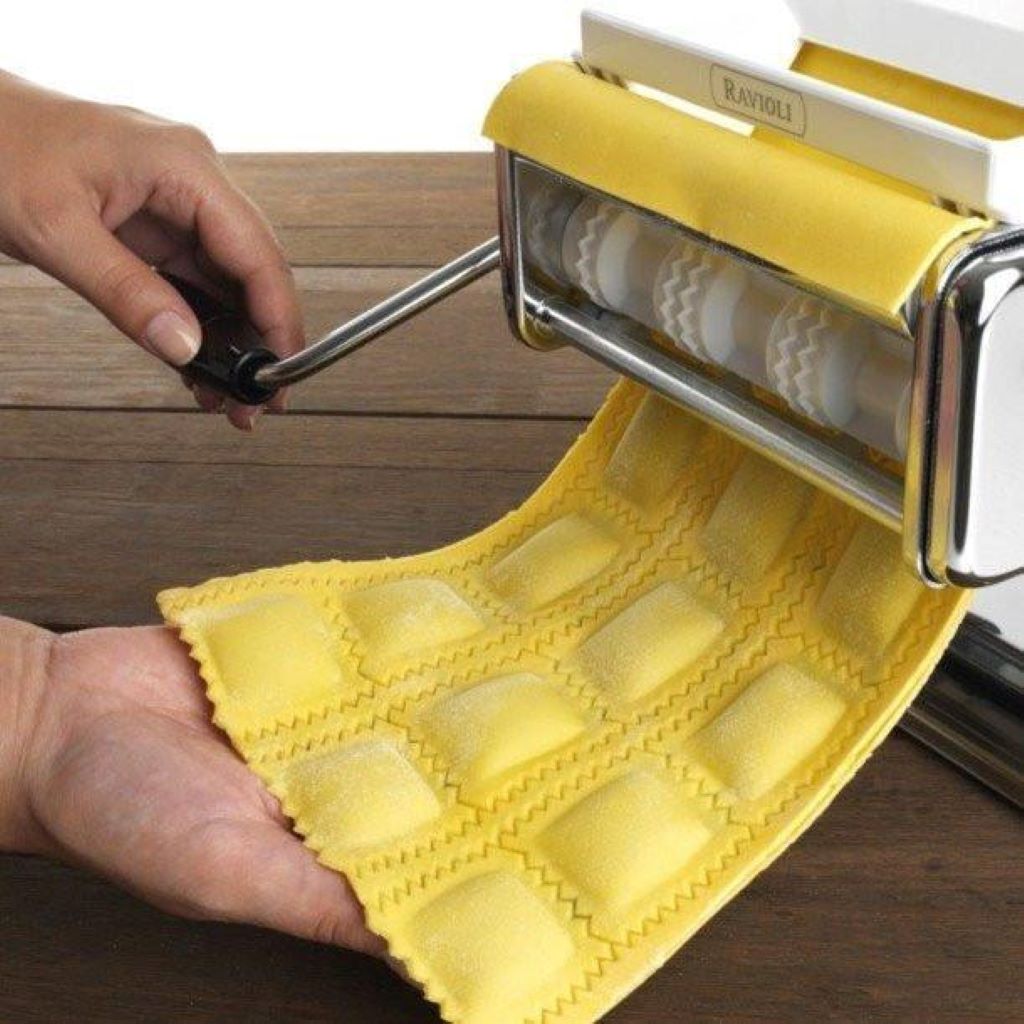Mastering the art of homemade ravioli can transform your culinary repertoire, elevating your skills from amateur cook to gourmet chef. Using a pasta machine for ravioli dough is one of the most effective ways to achieve consistent results with ease. Whether you’re a beginner or a seasoned pasta maker, understanding the nuances of using this incredible tool can save you time and frustration.
With modern innovations, pasta machines streamline the dough-making process, ensuring uniformity and precision that would be difficult to achieve by hand. From choosing the right flour to achieving the ideal dough consistency, we’ll walk you through every step to create flawless ravioli. Oh, and don’t forget to explore Smartpastamaker for more pasta-making tips and tricks!
The Basics of Ravioli Dough and Why Consistency Matters
Ravioli dough serves as the foundation for your final dish. Achieving the right balance between elasticity and firmness is essential to ensure that your pasta holds its shape during boiling while still offering a melt-in-your-mouth texture. Unlike standard pasta dough for spaghetti or fettuccine, ravioli dough needs to be thin enough to allow the flavors of the filling to shine through yet strong enough to avoid tearing during sealing and cooking.
When using a pasta machine, you have greater control over the thickness of the dough, which is crucial for achieving consistent results. Hand-rolled dough, while traditional, often results in uneven thickness, leading to issues with cooking time and texture.
Key Ingredients for Perfect Ravioli Dough
- Flour: The most common choice for ravioli dough is Italian “00” flour, prized for its fine texture and elasticity. However, you can also use all-purpose flour or a combination of semolina and all-purpose for added durability.
- Eggs: Fresh, high-quality eggs are essential for a rich and pliable dough. The rule of thumb is one egg per 100 grams of flour.
- Olive Oil: A small drizzle of olive oil enhances elasticity and flavor.
- Water: Adjust as needed to achieve the perfect dough consistency.
By following this basic recipe and refining it through the use of your pasta machine, you’ll create a canvas worthy of any gourmet ravioli filling.
Preparing the Dough: The Role of the Pasta Machine
Once your dough is mixed and kneaded, the next step is to incorporate your pasta machine into the process. A pasta machine not only simplifies the task of rolling out the dough but also ensures uniform thickness. This uniformity is critical for even cooking and achieving that professional look.
Steps to Prepare Ravioli Dough with a Pasta Machine
- Kneading: After combining your ingredients, knead the dough until it is smooth and elastic. This step activates the gluten, giving the dough its stretch and resilience.
- Resting: Allow the dough to rest for at least 30 minutes. Resting relaxes the gluten, making it easier to roll out without shrinking back.
- Rolling: Divide your dough into smaller portions before feeding it through the pasta machine. Start with the widest setting and gradually move to thinner settings to achieve your desired thickness.
For whole grain pasta, check out this step-by-step guide on how to use KitchenAid pasta roller for whole grain pasta. It’s a fantastic resource for diversifying your pasta repertoire.
Best Practices for Using a Pasta Machine

Start with Clean, Dry Equipment
Before you begin, make sure your pasta machine is clean and dry. Even a small amount of moisture or leftover dough from a previous use can affect your results. A dry cloth and a soft brush are all you need for cleaning most machines. Avoid water, as it can cause the metal to rust.
Divide and Conquer
Attempting to roll out an entire batch of dough at once can be overwhelming and counterproductive. Divide your dough into smaller, more manageable portions. Not only does this make the process easier, but it also ensures that each sheet of pasta is evenly rolled.
Dust Sparingly
Using a small amount of flour to prevent sticking is important, but be careful not to overdo it. Excess flour can dry out your dough and make it difficult to seal the ravioli. Instead, dust lightly and use a pastry brush to remove any excess.
Gradual Thickness Reduction
Avoid the temptation to jump straight to the thinnest setting on your pasta machine. Gradually reduce the thickness with each pass through the rollers. This method reduces stress on the dough and helps to maintain its structure.
Consistency is Key
To achieve uniform ravioli, all your sheets of dough should be the same thickness. Inconsistent thickness can lead to uneven cooking, with some pieces turning out chewy while others overcook.
Filling and Sealing Ravioli
Once your dough is rolled out, it’s time to add the filling. This is where your creativity can shine! Classic fillings like ricotta and spinach are always a hit, but don’t be afraid to experiment with other ingredients like roasted butternut squash, wild mushrooms, or even lobster.
Tips for Adding Filling
- Space Wisely: Use a piping bag or spoon to add small mounds of filling, leaving enough space between each one for sealing.
- Moisten the Edges: A light brush of water or beaten egg around the edges of the dough helps create a secure seal.
- Remove Air Bubbles: Press firmly around the filling to eliminate any trapped air, which can cause the ravioli to burst during cooking.
Sealing Techniques
Use a ravioli press or cutter for perfectly shaped pasta. Alternatively, you can use a fork to crimp the edges for a rustic look. Just ensure the seal is tight to prevent any filling from escaping.
Cooking Your Ravioli
Fresh ravioli cooks much faster than dried pasta. Drop your ravioli into a pot of boiling, salted water and cook for 2-4 minutes, or until they float to the top. Pair them with your favorite sauce, such as a light sage butter or a rich tomato basil blend.
You Might Enjoy: How to Keep Your Home Gas Safe
Maintenance and Care of Your Pasta Machine
To keep your pasta machine in peak condition, regular maintenance is essential. Always clean it immediately after use, removing any leftover dough or flour. Never immerse it in water—use a dry cloth or soft brush instead. Lubricate the rollers occasionally with food-safe oil to keep them operating smoothly.
FAQs
What thickness is best for ravioli dough?
The ideal thickness for ravioli dough is around 1-2 mm. This ensures the pasta is thin enough to cook evenly while being strong enough to hold the filling.
Can you freeze fresh ravioli?
Yes, fresh ravioli freezes well. Place them in a single layer on a baking sheet, freeze until firm, then transfer to an airtight container. Cook directly from frozen.
How do I prevent ravioli from sticking together?
Dust your ravioli lightly with semolina flour and avoid stacking them. Use parchment paper if you need to layer them before cooking or freezing.
What should I do if my dough is too dry?
If your dough feels dry or crumbly, add a small amount of water or olive oil. Knead until the texture improves.
Can I use a pasta machine for gluten-free ravioli dough?
Yes, but gluten-free dough can be more delicate. Handle it carefully, and use plastic wrap to support the dough during rolling.
How do I store leftover dough?
Wrap your dough tightly in plastic wrap and refrigerate for up to 24 hours. Allow it to come to room temperature before rolling.
Conclusion
Using a pasta machine for ravioli dough simplifies the process, ensuring consistent and professional results every time. By following the best practices outlined above, you can create delicious ravioli that rivals anything you’d find in a fine Italian restaurant.
Featured Image Source










+ There are no comments
Add yours